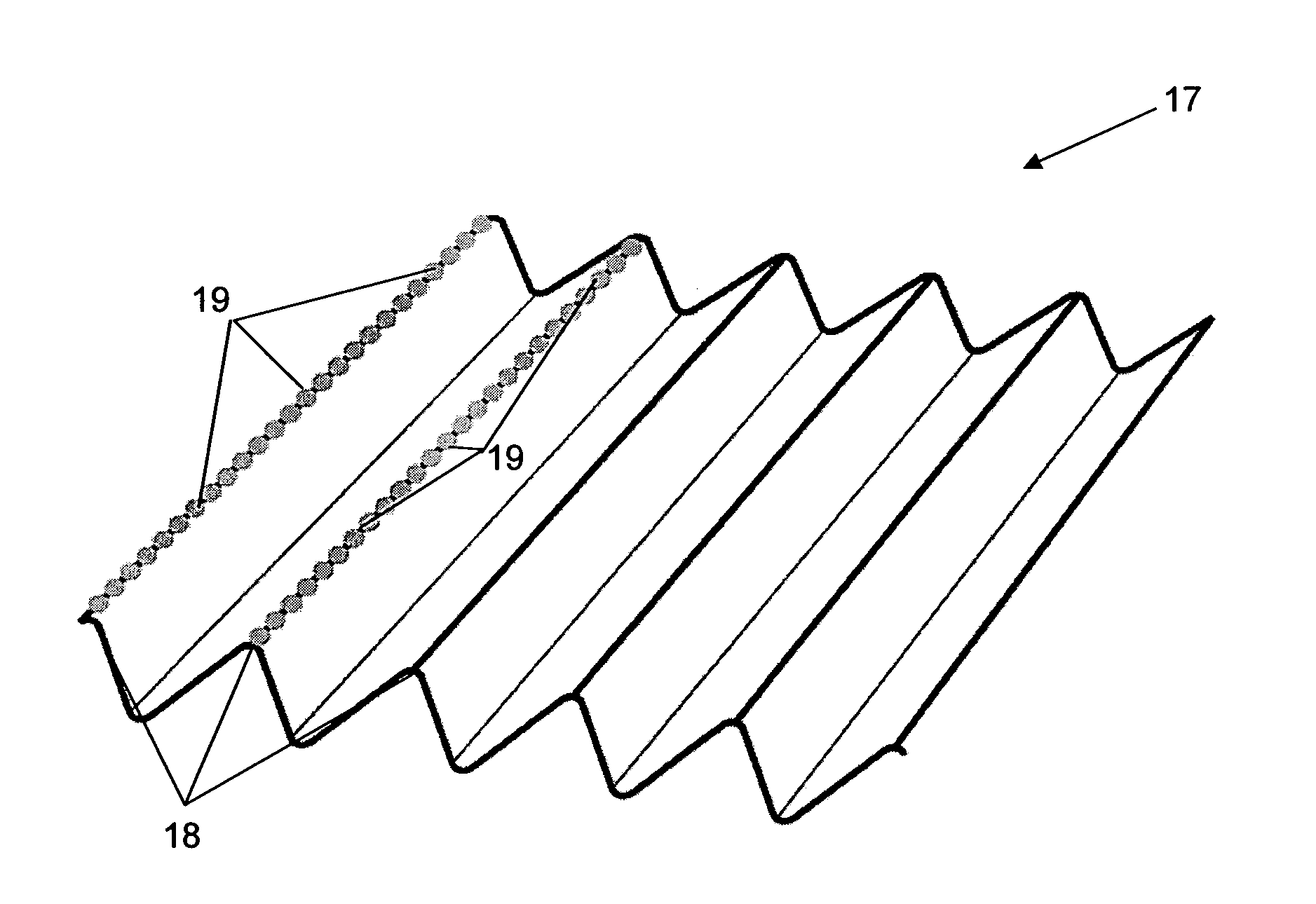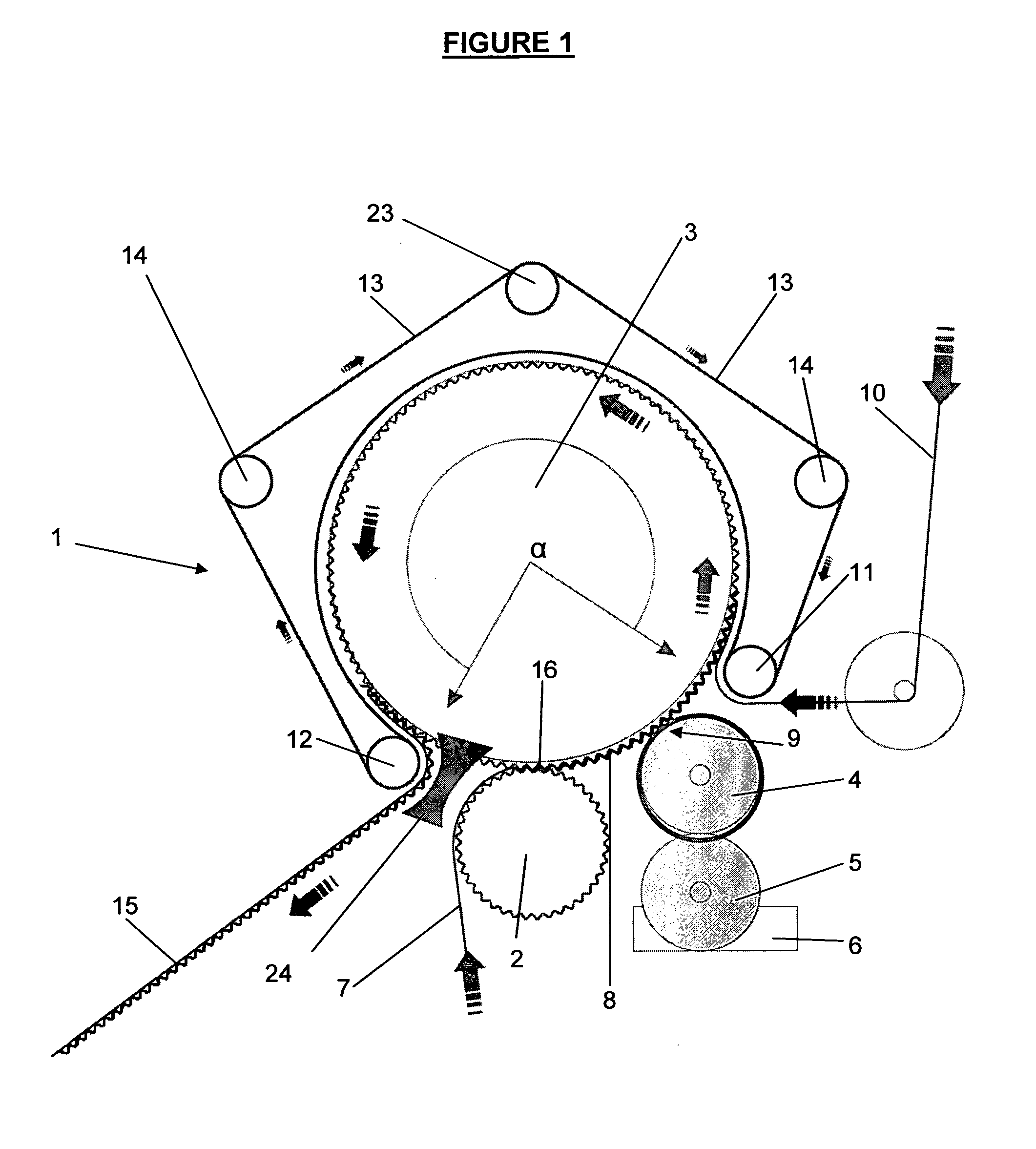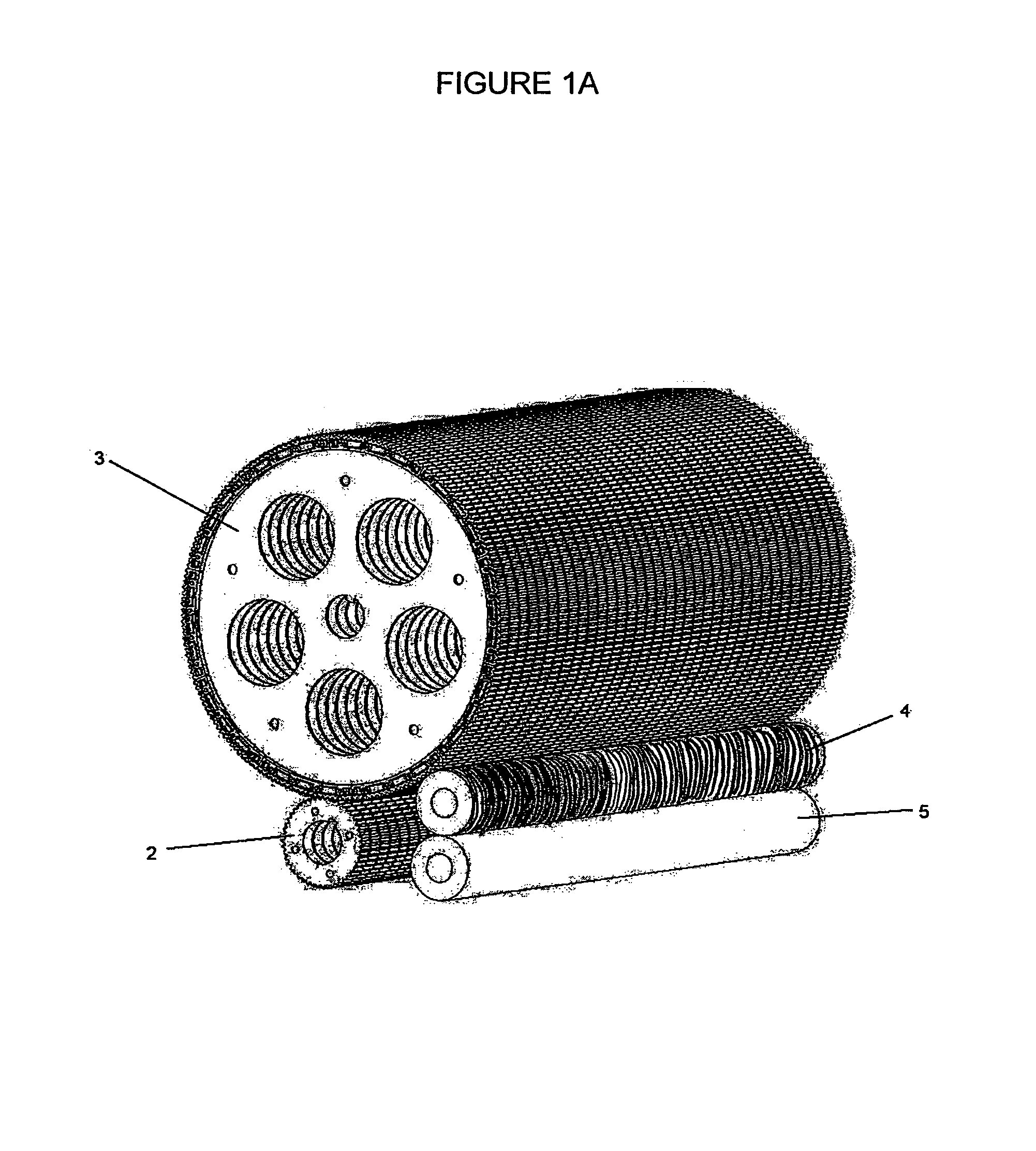Method of forming single face corrugated board
a corrugated board and single-face technology, applied in the field of single-face corrugated board forming machines, can solve the problems of reducing the value of the corrugated board, requiring high pressure to significantly speed up the bonding process, and unsightly marks on the surface of the liner paper, so as to reduce the need for expensive machinery and energy requirements, the effect of shortening the bonding tim
- Summary
- Abstract
- Description
- Claims
- Application Information
AI Technical Summary
Benefits of technology
Problems solved by technology
Method used
Image
Examples
Embodiment Construction
[0135]A portion of a machine for forming single faced corrugated board is generally shown by arrow (1) in the schematic side elevation shown in FIG. 1.
[0136]A first corrugating roller (2) has teeth (2′) arranged around the periphery of the first corrugating roller (2), the teeth (2′) extending laterally across the width of the first corrugating roller (2).
[0137]A second corrugating roller (3) has teeth (3′) around its periphery. The diameter of the second corrugating roller (3) is substantially larger than the diameter of the first corrugating roller (2).
[0138]The corrugating rollers (2 and 3) are arranged such that teeth (2′) of the first corrugating roller (2) intermesh with the teeth (3′) of the second corrugating roller (3) in the region indicated by number (16).
[0139]The first corrugating roller (2) is powered to rotate in a clockwise direction and the second corrugating roller (3) is powered to rotate in an anticlockwise direction, as indicated by the respective dashed arrows....
PUM
| Property | Measurement | Unit |
|---|---|---|
| temperature | aaaaa | aaaaa |
| time | aaaaa | aaaaa |
| time | aaaaa | aaaaa |
Abstract
Description
Claims
Application Information
 Login to View More
Login to View More - R&D
- Intellectual Property
- Life Sciences
- Materials
- Tech Scout
- Unparalleled Data Quality
- Higher Quality Content
- 60% Fewer Hallucinations
Browse by: Latest US Patents, China's latest patents, Technical Efficacy Thesaurus, Application Domain, Technology Topic, Popular Technical Reports.
© 2025 PatSnap. All rights reserved.Legal|Privacy policy|Modern Slavery Act Transparency Statement|Sitemap|About US| Contact US: help@patsnap.com



